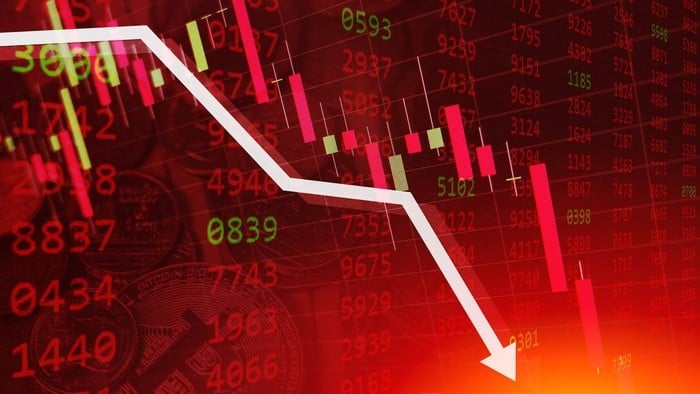The S&P/ASX 200 Index (ASX: XJO) has found itself in deep waters, sliding 1.81% to 7,235 by market close on Monday.
ASX 200 shares in the banking and financials sector were the main victims in today's sharp pullback. Most notably, Commonwealth Bank of Australia (ASX: CBA) shares finished the session down 5.43%.
Smaller and regional banks including Bendigo and Adelaide Bank Ltd (ASX: BEN) and Bank of Queensland Limited (ASX: BOQ) were also major losers today, sliding 5.32% and 4.98% respectively.
Elsewhere, iron majors including BHP Group Ltd (ASX: BHP), Rio Tinto Ltd (ASX: RIO) and Fortescue Metals Group Ltd (ASX: FMG) have slipped 1.96%, 2.77% and 2.72% respectively, despite iron ore prices remaining relatively buoyant at US$214/tonne.
Other typically defensive sectors such industrials and utilities also finished in the red.
In contrast, the S&P/ASX Information Technology (INDEXASX: XIJ) managed to eke some green, up 0.18%. Afterpay Ltd (ASX: APT) shares also managed to stand tall, closing 2.46% higher to $117.21.
What's driving these blue chip ASX 200 shares lower?
It's likely that the ASX 200 has been influenced by the selloff across US indices on Friday night. The S&P 500 Index (INDEXSP: .INX), Dow Jones Industrial Average (INDEXDJX: .DJI) and Nasdaq Composite (INDEXNASDAQ: .IXIC) tumbled 1.31%, 1.58% and 0.92% respectively.
More specifically, financials, energy and utilities were the main laggards for the US market on Friday, falling 2.45%, 2.92% and 2.63% respectively.
This came after the US Federal Reserve took the spotlight last week when it signalled a potential rate rise by late 2023 despite previously saying there would no increases until at least 2024 in March.
The Australian Financial Review reported today that the post-Fed meeting market reaction which has seen investors reversing some cyclical bets and inflation hedges was "likely an overreaction" even though "it could continue for a while yet".
In Australia, we have not seen an interest rate increase since late 2011. The prospect of such hikes on the horizon could dampen growth prospects and spell the end of a near-zero interest rate era.









